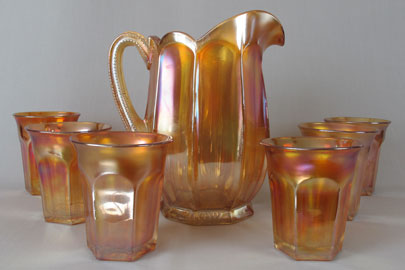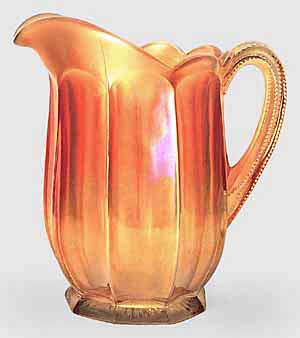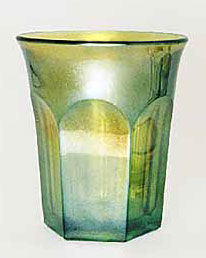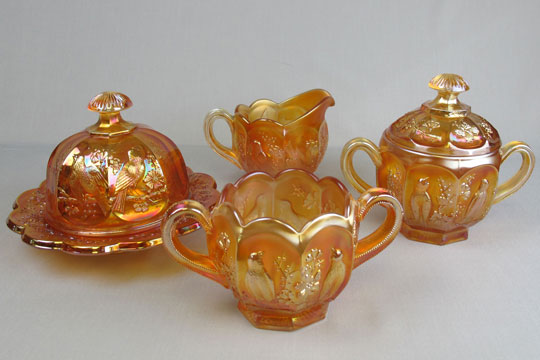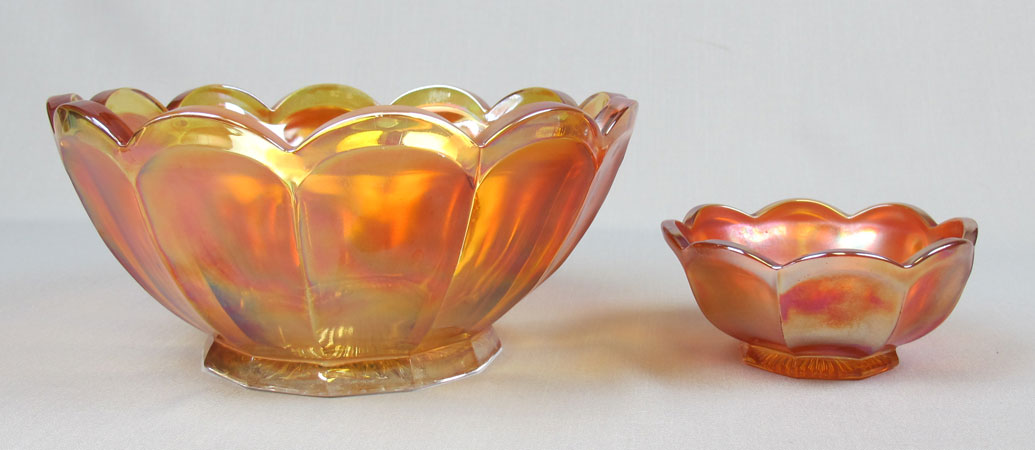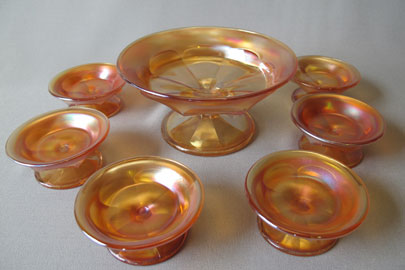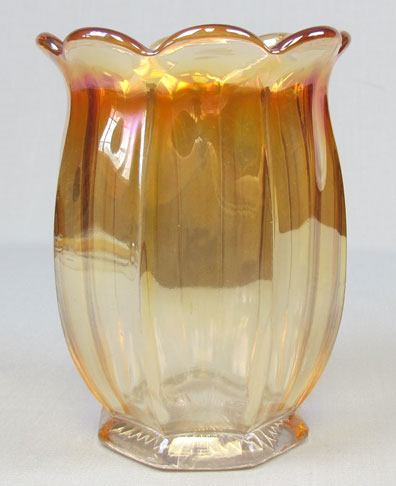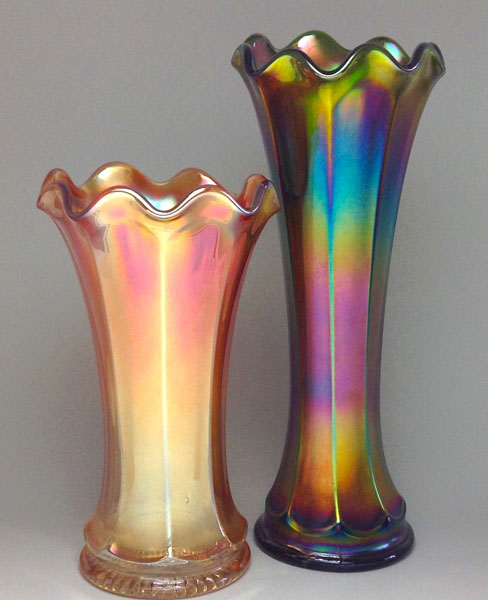Shown above to the left is a Nut Set or Salt Set. Seven pieces with one master and six individuals. Found infrequently in marigold. The moulds must have been re-used with the introduction of Northwood's Rainbow line (stretch) as this Nut/Salt set can also be found in celeste blue and topaz. The master salt is 5 3/4 inches across and 3 inches tall. It has 8 exterior flutes. The indivdual salt is 3 inches across and 1 1/2 inches tall. It has 6 exterior flutes.
The photo in the center shows the sherbert. Northwood Flute sherbets can be found in marigold and occasionally green. These sherberts have a round base, 9 exterior flutes, are about 3 inches tall and are 4 inches across the top. This mould was also resurrected for Northwood's Rainbow line (stretch) and can be found in blue opaque, Vaseline, russet, celeste, and possibly other stretch colors.
The photo on the right shows a Northwood Flute celery vase that is considered rare. The few known examples are marigold. The vase is almost 6 inches tall, has 8 exterior flutes that end in scallops at the top and has an 8 sided base.
